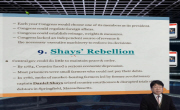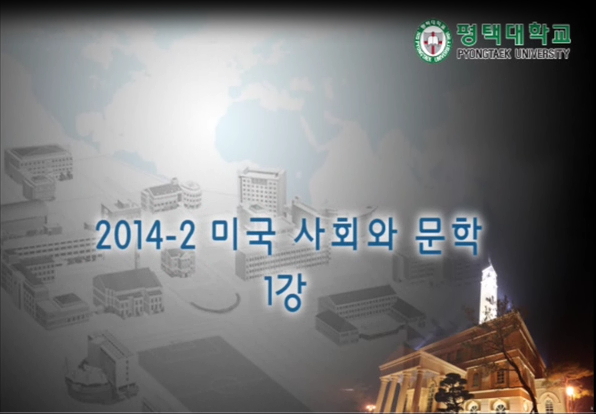The purpose of this paper is to analyze the history of trade policy in the U.S and the present situation of import restrictions against Korea and to suggest directions of trade relations between Korea and U.S and export strategies into U.S market. Th...
http://chineseinput.net/에서 pinyin(병음)방식으로 중국어를 변환할 수 있습니다.
변환된 중국어를 복사하여 사용하시면 됩니다.
- 中文 을 입력하시려면 zhongwen을 입력하시고 space를누르시면됩니다.
- 北京 을 입력하시려면 beijing을 입력하시고 space를 누르시면 됩니다.
美國의 輸入規制와 우리의 對美輸出戰略 = (A) Study on Import Restrictions in America and Korean Strategy Against American Export
한글로보기https://www.riss.kr/link?id=T2294318
- 저자
-
발행사항
부산 : 釜山産業大學校 貿易大學院, 1987
-
학위논문사항
학위논문(석사) -- 부산산업대학교 무역대학원 , 무역학과 , 1987. 8
-
발행연도
1987
-
작성언어
한국어
-
주제어
미국 ; 수입규제 ; 무역 ; 수출전략 ; American Export ; Import Restriction
-
KDC
326.20911 판사항(4)
-
DDC
382.09519073 판사항(21)
-
발행국(도시)
부산
-
형태사항
93p. : 삽도 ; 26cm.
-
일반주기명
부산산업대학교는 경성대학교로 변경됨
참고문헌: p. 87-90 - 소장기관
-
0
상세조회 -
0
다운로드
부가정보
다국어 초록 (Multilingual Abstract)
The purpose of this paper is to analyze the history of trade policy in the U.S and the present situation of import restrictions against Korea and to suggest directions of trade relations between Korea and U.S and export strategies into U.S market.
Throughout the post-World War Ⅱ era, the United States has been the world staunchest supporter of open trade. In 1970ts, however, the trade policy of the U.S.turned into the tendency of protectionism on the basis of the change of comparative advantage type which resulted from the rise of NICs and the down of economic position in international economic relations attributed to the development of EC, Japan and continued deficit.
The domestic pressure for protection has much heightened for the increase of unemployment, the deterioration in balance of payments, business depression.
In response to these economic crises, the United States has applied various import restriction measures, that is, quantitative quata, the reduction of GSP, Safeguard, unfair trade practice restriction to foreign countries, expecially, NICs as like Korea. Therefore the growth rate in export to the U.S. has been shown the slow down tendency.
In order to cope with the various import restrictions of the U.S. and to expedite the export performance to the U.S. we must export strategies as follows.
First, we must reconsider the existed market strategy establish the product strategy, the distribution strategy suitable for individual unit market in terms of market segmentation.
Second, we must develope new distribution channel, that is, avoid export trade with wholesalers or retailer, intermediate distributor of manufacturer in U.S. and try to enter into direct business with final demander.
Third, we must design the support system to encourage the innovation and pursuit the diversification of exportable goods and high superior quality continuously.
Fourth, we must train marketing specialists in order to increase the export of technology intensive capital goods and heavy & chemical industry products.
Fifth, we must attempt the export-industrialization of small-medium enterprises and continue to expand diverse support-measures for developing exportable goods in small-medium enterprises.
목차 (Table of Contents)
- 目次 = 1
- Ⅰ. 序論 = 5
- 1. 硏究의 目的 = 5
- 2. 硏究의 方法 및 範圍 = 6
- Ⅱ. 美國의 輸入政策의 變遷過程 = 8
- 目次 = 1
- Ⅰ. 序論 = 5
- 1. 硏究의 目的 = 5
- 2. 硏究의 方法 및 範圍 = 6
- Ⅱ. 美國의 輸入政策의 變遷過程 = 8
- 1. 第2次 世界大戰 이전의 輸入政策 = 9
- 2. 第2次 大戰後의 輸入政策 = 12
- 1) 自由貿易政策 = 13
- 2) 保護貿易政策 = 16
- Ⅲ. 美國의 輸入規制 强化背景 = 19
- 1. 經濟的 要因分析 = 19
- 2. 經濟外的 要因分析 = 25
- Ⅳ. 美國의 主要 輸入規制現況 = 27
- 1. GSP 受惠幅의 縮小 = 29
- 1) 韓國 및 競爭國의 活動現況比較 = 29
- 2) 第2期 運用計劃과 展望 = 32
- 2. 輸入數量規制 = 37
- 1) 數量規制 「 메카니즘 」 = 37
- 2) MFA 에 의한 纖維類輸入數量親制 = 39
- 3) VER, OMA에 의한 輸入數量規制 = 42
- 3. 「 세이프 · 가드 」 規制 = 45
- 1) 規制 「 메카니즘 」 = 45
- 2) GATT 第 19 條와의 關係 = 47
- 3) 規制現況 = 49
- 4. 不公正貿易慣行親制 = 51
- 1) 規制類型 = 51
- 2) 規制現況 = 53
- Ⅴ. 韓美貿易構造分析 = 61
- Ⅵ. 美國의 保護貿易措置 强化와 對美輸出戰略 = 72
- 1. 美國의 輸入規制展望 = 73
- 2. 韓美通商關係의 方向 = 78
- 3. 우리의 對美輸出戰略 = 80
- 1) 對美 市場浸透戰略의 再檢討 = 80
- (1) 市場細分化 (Market Sementation ) = 80
- (2) 經路戰略 ( distribution channel strategy ) = 81
- 2) 新製品 開發 = 81
- 3) 中小企業 의 輸出産業化 = 83
- 4) 關稅 및 輸出支援制度의 改善 = 83
- Ⅶ. 結論 = 85
- 參考文獻 = 87
- Abstract = 91












